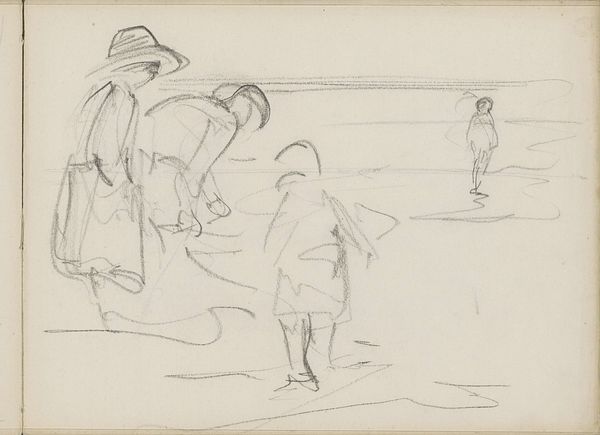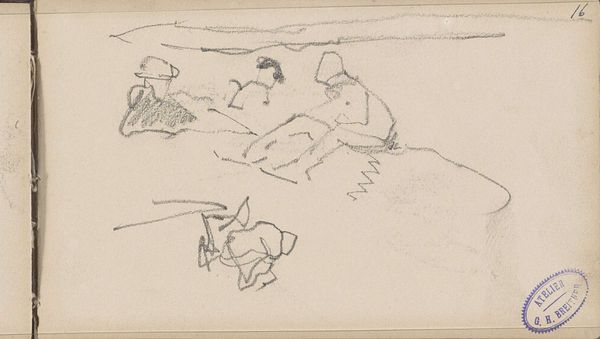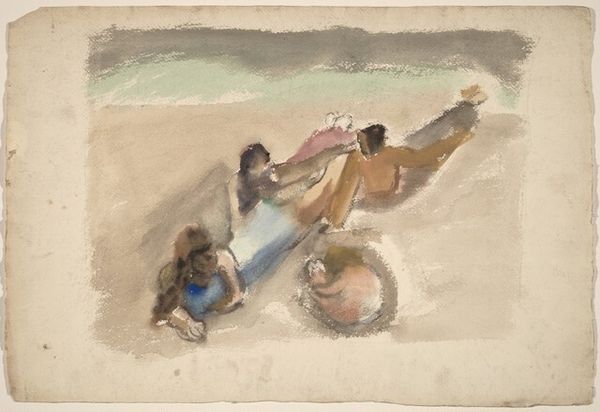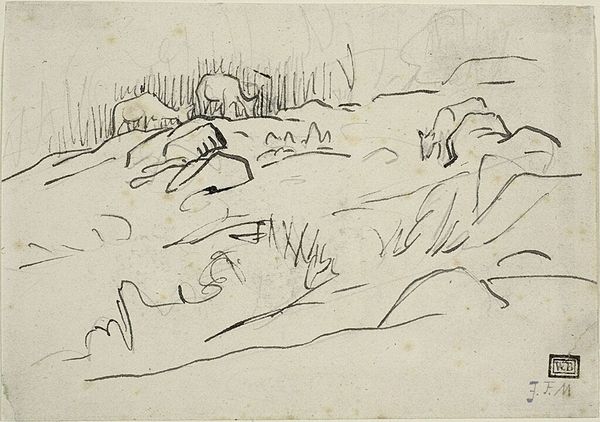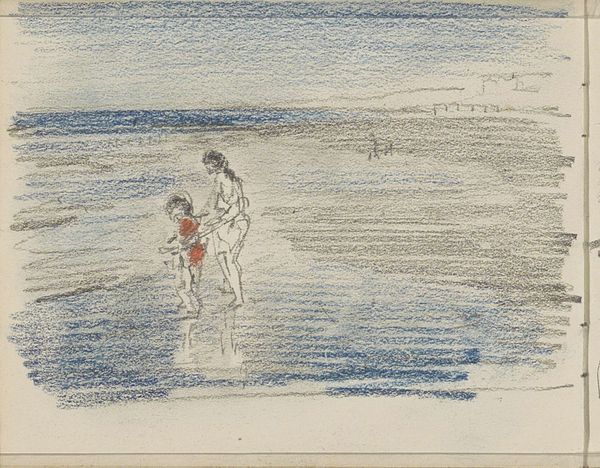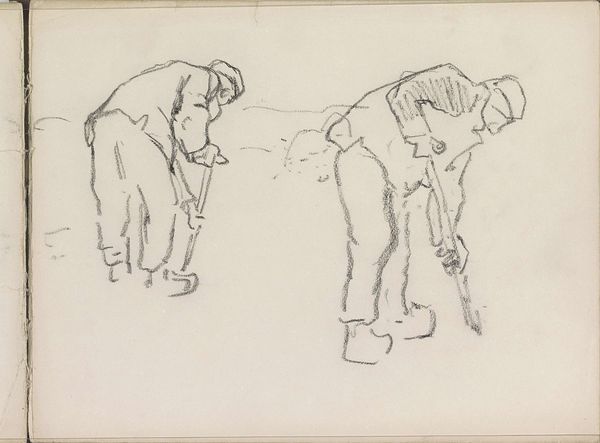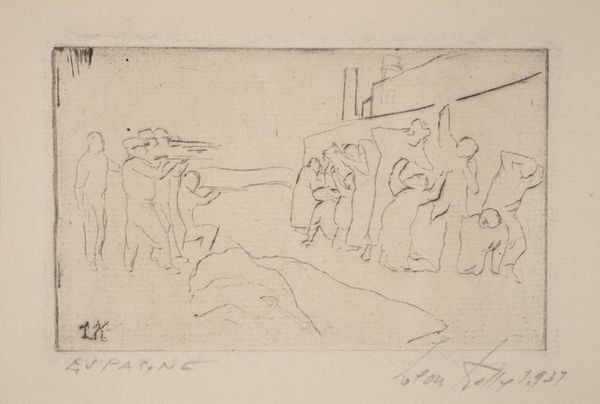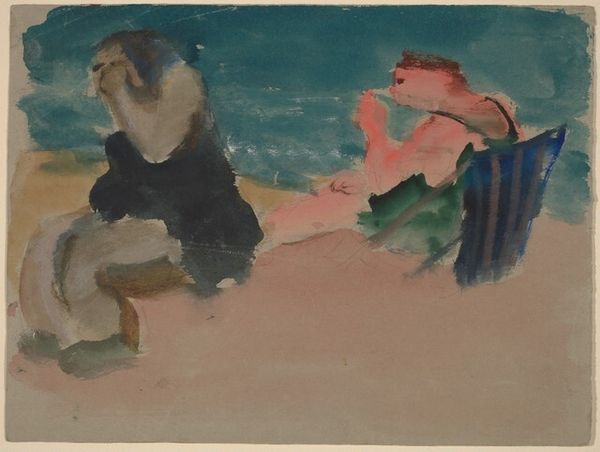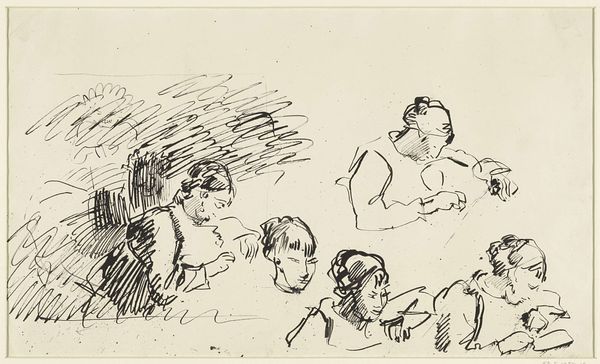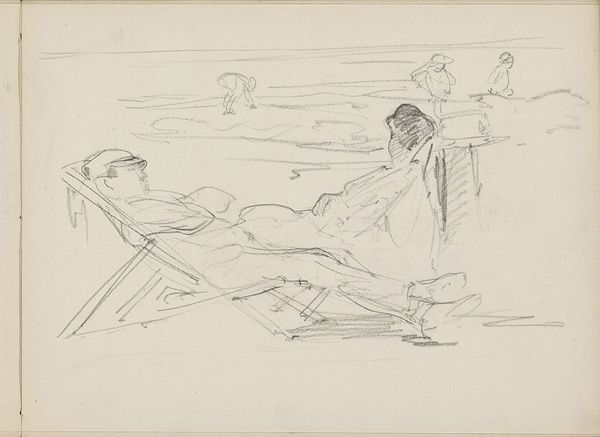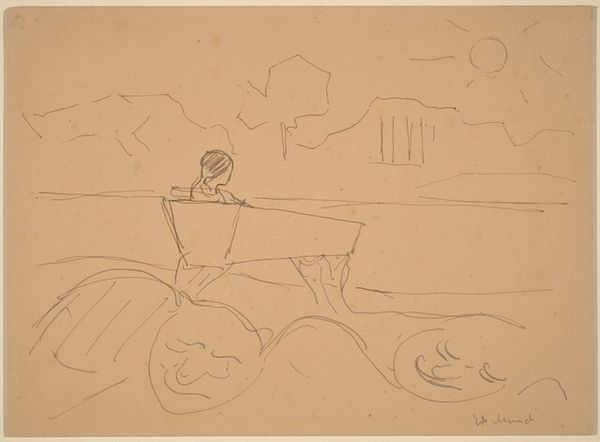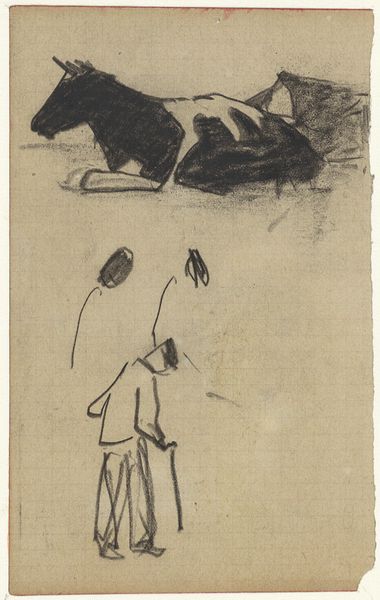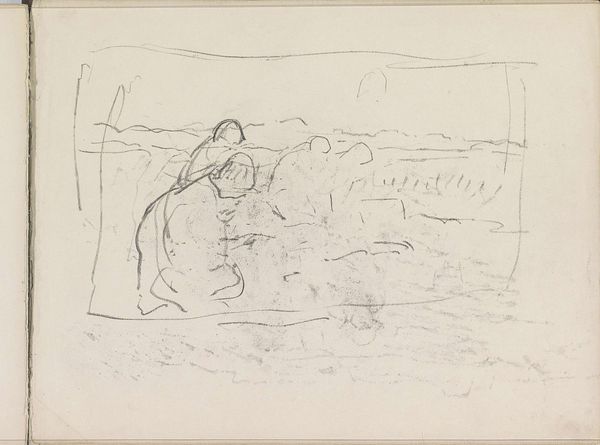
drawing, print, etching
#
drawing
# print
#
etching
#
landscape
#
figuration
#
genre-painting
#
modernism
Dimensions: plate: 10.6 x 21.4 cm (4 3/16 x 8 7/16 in.) sheet: 33 x 37.8 cm (13 x 14 7/8 in.)
Copyright: National Gallery of Art: CC0 1.0
In this 1941 etching, Milton Avery captures a beach scene, using a minimalist approach. The composition strikes one with its use of line to define figures and landscape. Each form is simplified to its essential contours, challenging our perception of depth and space. The stark contrast between the dark lines and the paper enhances the flatness of the scene, moving away from traditional representational art towards a more abstract interpretation. Avery reduces figures to mere suggestions through line, which invites us to engage with the basic elements of form and their arrangement. This sparseness creates a contemplative viewing experience. The figures, though barely there, evoke a sense of human presence and interaction. This interplay between presence and absence is key to understanding how Avery uses form to communicate deeper meanings about perception and reality. Notice how the horizon line is suggested with simple dashes, grounding the scene in the reality of sea and shore, but also abstracting it. This technique allows the artwork to oscillate between representation and abstraction, prompting an ongoing re-evaluation of what we see.
Comments
No comments
Be the first to comment and join the conversation on the ultimate creative platform.
